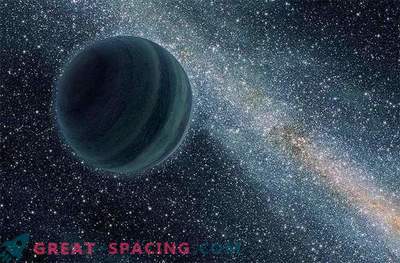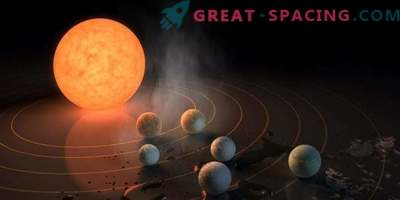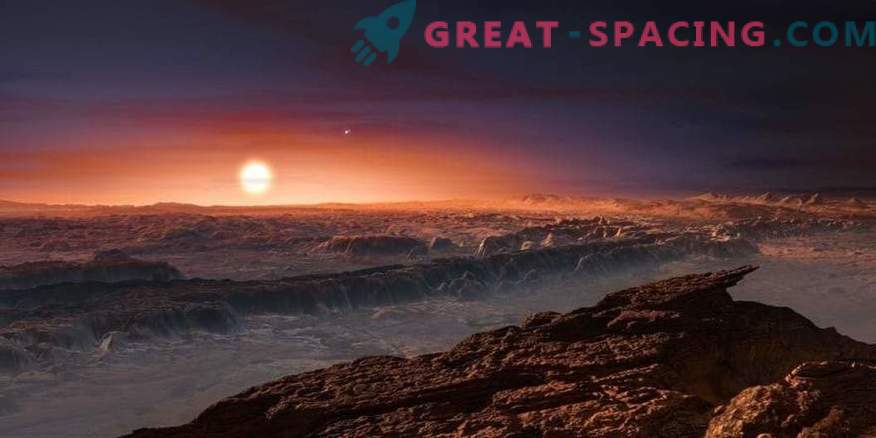
The number of exoplanets found is now in the thousands. Every world is unique and alien. But some stand out so much that this year has become special for hunters on extrasolar planets.
- Proxima Centauri b
The planet is located in the “habitable zone” of the star - a region with the temperature necessary for liquid water. She was found practically in the “backyard” during the unique Red Blue Dot company. It is approximately 1.3 times the mass of the Earth and its orbit occupies about 5% of the distance from the Earth to the Sun. The team was led by Guillaume Anglada Escuede of Queen Mary, University of London.
- TRAPPIST-1
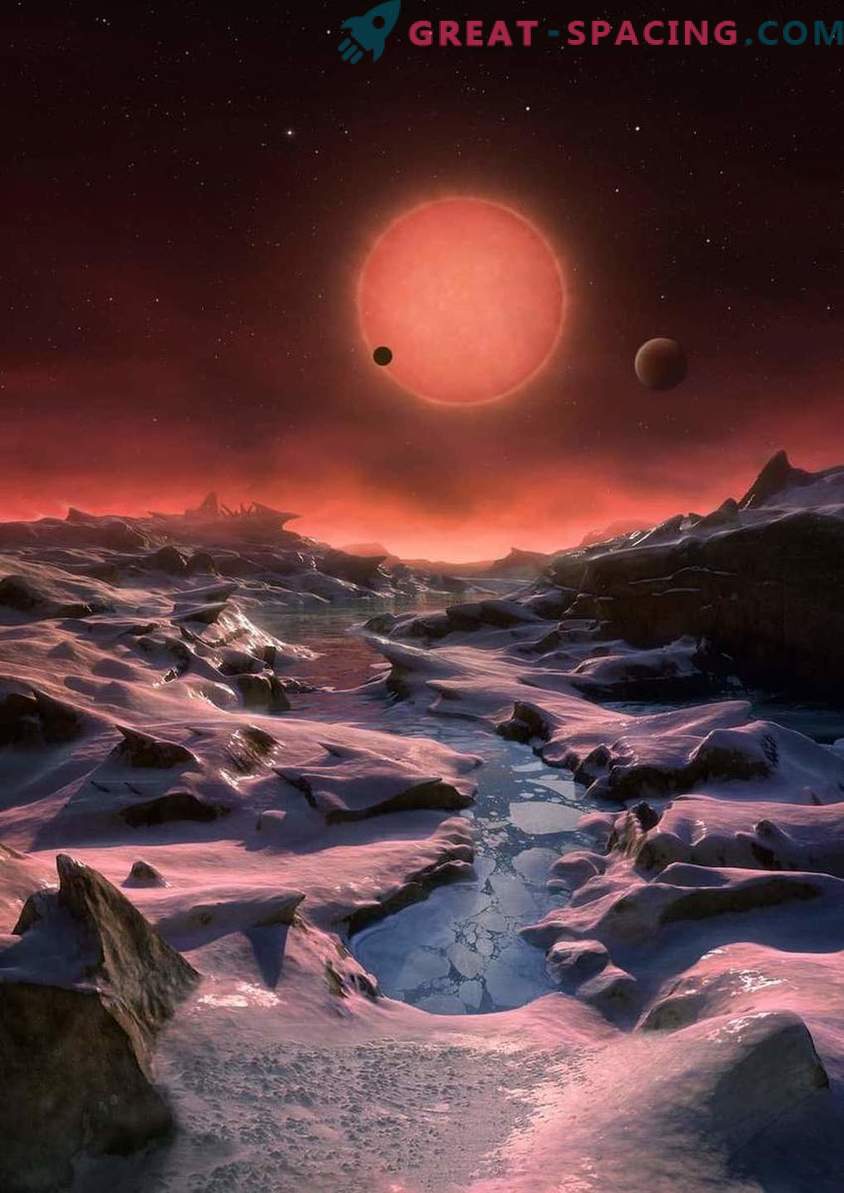
Interpretation of the artist of a dwarf star and its three planets, in size and temperature resembling Venus and Earth.
It was an incredible astronomical find. The group found evidence of the existence of three exoplanets, like Venus and Earth. And this is surprising, considering that TRAPPIST-1 is an ultracold dwarf, and earlier no planets were observed near similar objects of the planets. These findings are interesting because their atmospheres are easier to observe. Especially if it is habitable environment, because the star is quite dim. The team was led by Michael Gillon from the Institute of Astrophysics and Geophysics at the University of Liege in Belgium.
- The rings of the planet rotate in the wrong direction

Artistic interpretation of the fancy ring system J1407b. In 2015, researchers suggested that a strange series of eclipses around the star J1407b could be caused by a planet with a huge ring system. Only at the beginning of this year, the team published another document suggesting that such a scheme would work only if the rings rotate in the opposite direction from the orbit around the star. It may sound unstable, but this position of the rings can persist for more than 100,000 years. The study involved Matthew Kenworthy of the University of Leiden in the Netherlands.
- Three planets around two nearby stars

Artistic vision of the rotation of three planets around two stars.
We all heard about systems similar to Tatooine from “Star Warrior”, where the orbit of the planet covers two stars. But it turns out there are even more bizarre combinations. Scientists have found a system in which three planets revolve around two stars located very close to each other (HD 133131A and HD 133131B). Researchers are studying it more closely to consider how planets like Jupiter begin to develop from long and elongated orbits. The team was led by Joanna Teske of the Carnegie Institute.
- A planet orbiting around three stars
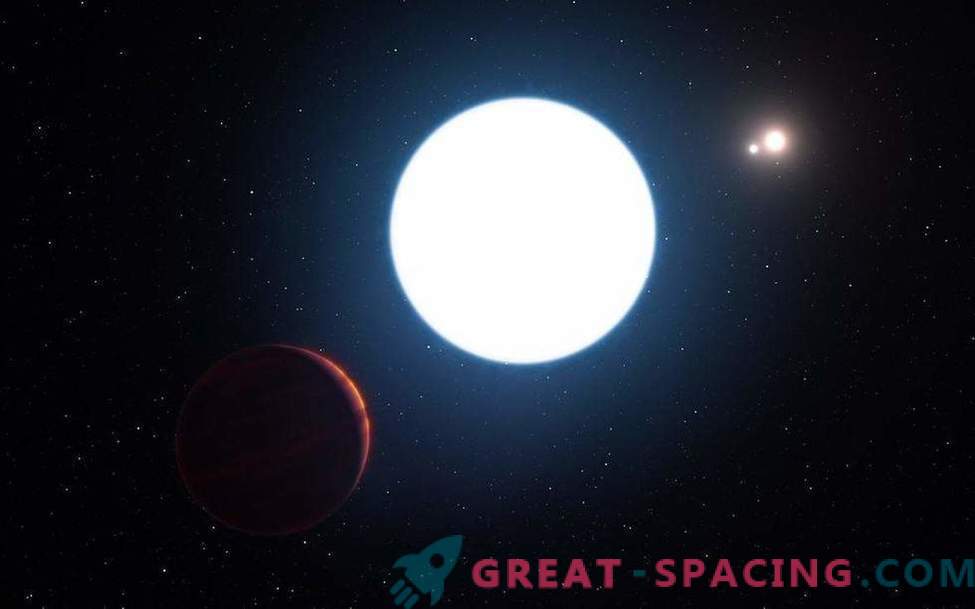
The planet in the HD 131399 system, rotating around three stars.
It is strange that there can be a whole world surviving in three orbits. But he is! The HD 131399 system shows a planet with the widest known orbit in a multi-star system. If earlier astronomers doubted about such a possibility, now they are looking for similar objects. The team was led by Kevin Wagner of Arizona State University.
- Kepler’s new mission added another 100 exoplanets
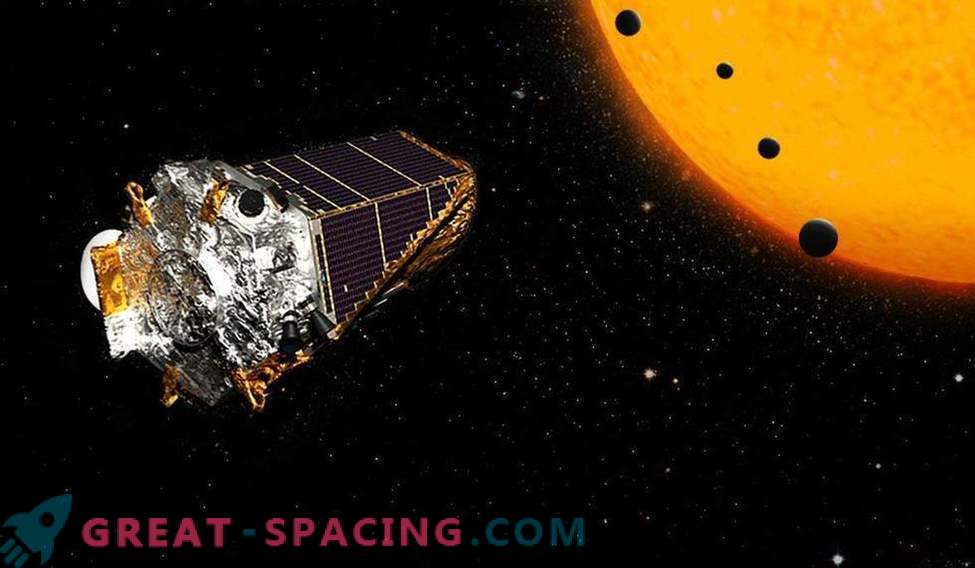
The Kepler Space Telescope and its K2 mission.
A few years ago, the Kepler space telescope (honorary exoplanet hunter) lost the ability to pinpoint objects. NASA developed a new project, using the pressure of the Sun to stabilize the mechanism, and received a more productive result than expected. This year, the K2 mission announced that the search issued 104 objects. One of the most promising finds was the star K2-72, which has four planets (perhaps rocky).
- Kepler's base produces more than 1200 exoplanets

Some of the many planetary discoveries of the telescope.
Although Kepler has completed his main task, his data has been stored for many years. NASA is constantly analyzing information to figure out how many of these candidates will become planets. The latest results show that 1284 of them are 99% likely to be planets. Almost 550 of them are stony, and 9 are located in the habitable zone.
- The children's planet is only 11 million years old
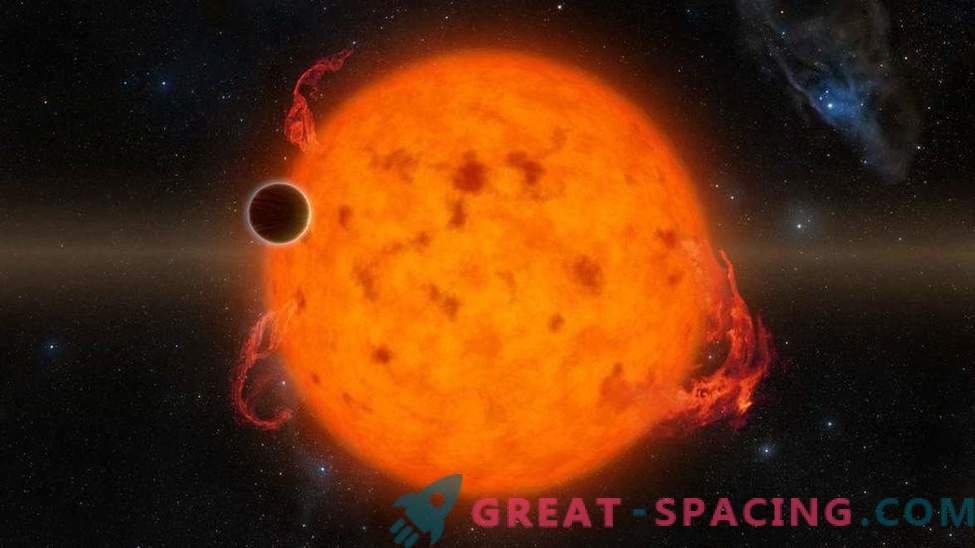
The young planet orbiting the K2-33 star.
Earlier this year, astronomers announced that they had discovered the youngest of the previously known planets, located 4.5 billion years from Earth. This super-Neptune is 5 times the size of Earth and its orbit is 5 million miles, which makes it hot. It was first found by the K2 mission, and then confirmed by MEarth-North and MEarth-South in Arizona and Chile. The study was conducted by Andrew Mann of the University of Texas at Austin.
- Another place to hunt
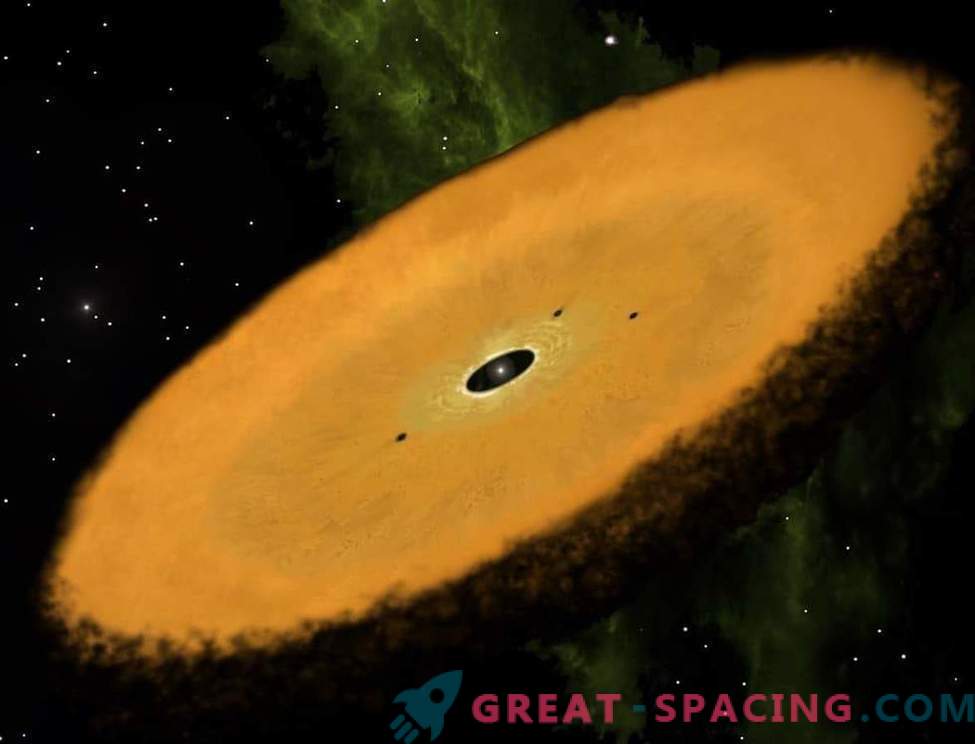
A disc surrounding a red dwarf AWI0005x3s.
While searching the entire Solar System, scientists within the framework of the NASA program “Disk-Detective” have found a potential place for new searches. They stumbled upon a circumstellar disk (usually found in young planetary systems) around the red dwarf AWI0005x3s. The star is only 212 light years from Earth, which makes it attractive for observations. Headed the project Stephen Silverberg from the University of Oklahoma.
- Ninth Planet
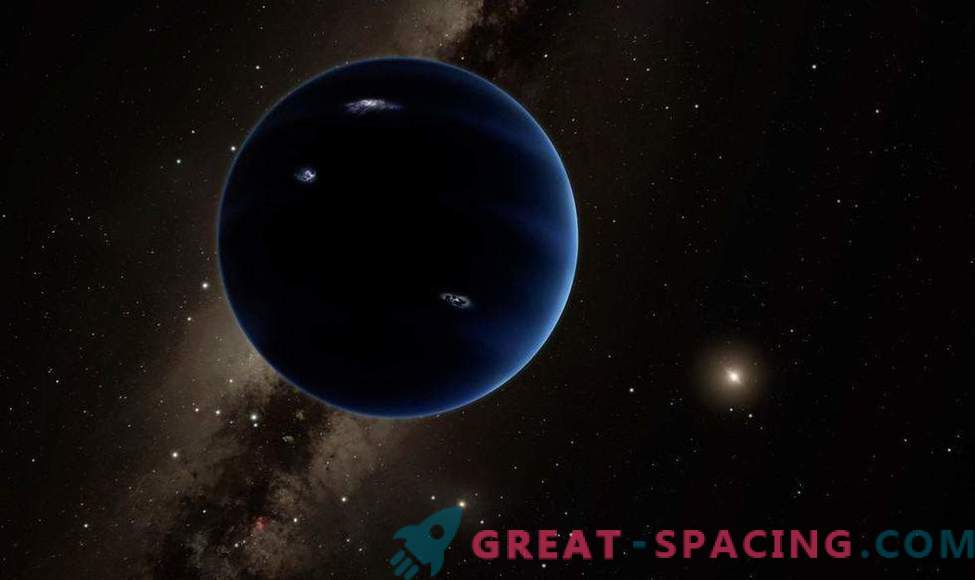
Theoretical Planet Nine with the Sun in the background.
Although technically it is not an “exoplanet,” but it is still a foreign world, which caused unrest in the public. Planet Nine is considered a hypothetical object on the edge of the Solar System, whose orbit takes 10,000-20,000 years. Using the simulation, the researchers reported that its existence will help explain the movement of objects in the Kuiper Belt (the ice region beyond the orbit of Neptune). The study was conducted at the California Institute of Technology Konstantin Batygin and Mike Brown. The second is known for finding several objects (the size of Pluto) in the outer solar system.







